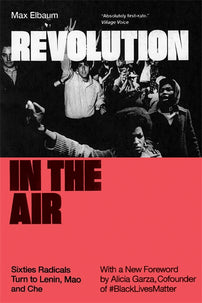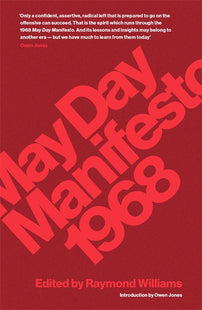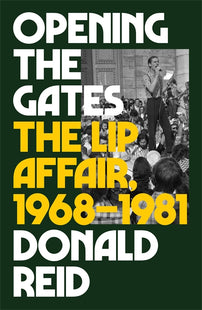Storm in the Philippines
Alex De Jong on the Philippines in the global '68

“1968” came to the Philippines two years late. When it did arrive, it exploded with fury. In 1970, the Philippines was a democratic republic but president Ferdinand Marcos' authoritarian tendencies and desire to remain in office beyond his term limit were already visible. There were many other grievances that added fuel to the fire, such as the corruption, poverty, and deep inequality in what was then one of the most prosperous countries of South-Asia, and, as in many other places across the world, the war in Vietnam was a cause of anger.
In late 1969, police had responded violently to anti-Marcos protests. A rally protesting the visit of US vice-president Spiro Agnew was broken up with truncheons. In early 1970, “the campuses hummed with teach-ins and convocations denouncing police brutality and the 'rise of fascism'” wrote novelist and journalist Nick Joaquin under his pen-name Quijano de Manila; “When Congres opened, the more militant among the student population were all keyed up and ready to go into battle”.
In 1969 Ferdinand Marcos was re-elected after exceptionally fraudulent and violent elections. On January 26, 1970, he was to deliver his State of the Nation address. In the words of Joaquin, “Mr. Marcos rose to discourse on the State of the Nation. His address bore the title 'National Discipline: The Key to Our Future'. No one would recall what it was all about.” When Marcos came out of the building, anger erupted. “Pebbles and crumpled manifestos flew, then bottles and chairs; the activists scattered as the cops flailed away with their rattan truncheons. As suddenly as it began, the battle ceased, and the car with the No. 1 plate made good its getaway. The cops retreated into the legislative building with hostages in tow; the demonstrators, mostly radicals, who were not driven all the way home by the charge of the police brigades, quickly regrouped and, arms linked, surged forward, marching in step to a martial chant: “Makibaka! Huwag Matakot!” Struggle! Do not be afraid!
It was the beginning of several weeks of militant protests in the capital city of Manila that would become known as the First Quarter Storm. In late January, radicals hijacked a fire truck that was used to douse the protesters with water. The hijackers used it to ram the gate to the presidential palace. They had to be driven out of the palace grounds by the Presidential Guard Battalion. The police went from using truncheons to using live ammunition, beating up anyone they could get their hands on. Four students were killed.
Among the organisations of the more militant students the most prominent were the Kabataang Makabayan (KM, Nationalist Youth) and its breakaway, the Samahang Demokratiko ng Kabataan (SDK, Association of Democratic Youth). The KM had been organized only shortly before on instructions of the Partido Komunista ng Pilipinas. The party was looking to rebuild public support after the defeat of its guerilla struggle in the fifties and trying to find a way into the political mainstream. But its new youth organisation was led by radicals who instead looked to Mao's China and the supposed lessons of the Chinese revolution. They broke with the old party and set up the Communist Party of the Philippines (CPP). Their goal was to revive the armed struggle and commence a Maoist guerilla war. At the beginning of the First Quarter Storm, the CPP's guerilla army had barely been organized, but their exploits and its leader, known under his nom de guerre Ka (short for kasama or comrade) Dante, became legendary.
Anger about the US war in Vietnam was intensified by Marcos' support for the Americans. Marcos went as far as sending Philippine troops to Vietnam to provide “logistics support”. This support for the US war in Vietnam was the latest example of subservience of the Philippine government to the former colonizers.
Under the banner of Maoism, resistance to the war in Vietnam, against the ruling class at home and against US neocolonialism came together in the struggle for a “national-democratic” revolution. A KM leaflet declared; “The rapidly deteriorating plight of the masses of the Filipino people proves the utter bankruptcy of neocolonial politics epitomized by the reactionary, pseudo-nationalist policies of the fascist puppet Marcos”.
In February, protesters stormed the U.S. Embassy. In his famous report on the movement, Days of Disquiet, Nights of Rage, Jose F. Lacaba described the scene; “Suddenly a boy darted out of the crowd and hurled his torch at a tree within the compound of the Embassy: instant flame tree, though the flame instantly died. Then the shock troops charged, throwing rocks and more torches.” Protesters broke open the gate and “rushed into the lobby, ripping off wooden partitions, throwing chairs and benches to the flames. Someone came out dragging a fire extinguisher. ““We have a weapon now!” went the cry. Soon, somebody else came dashing out with the red pay telephone he had pried loose from its perch. “Let's call Dante”, he cried gleefully as he dialled numbers at random”.
All this time, Marcos arrogantly ignored the demands of the movement, including those of its more moderate wing. When Edgar “Edjop” Jopson, the president of the moderate National Union of Students of the Philippines, asked Marcos to commit in writing to respecting his term limit, the president derided him as a mere “grocers son”; not someone he needed to take serious. On television, Marcos claimed demonstrators had conducted a “premeditated attack on the government, an act of rebellion and subversion” and that they were in league with Mao's China.
Joaquin later described the KM as “the youth gang that made history”; “It was very Now and very Mod to be KM”, “In 1968...we were singing Hey Jude and Can't Take My Eyes Off of You. We were singing a very different tune when the 1970s began. Makibaka! became the cry of a January evening in 1970”. “The demonstrator created a lifestyle too. Early in the year, when the nights were cold, he marched in turtle-neck. His weapons were stone and placard. After the initial riots, the use of the Molotov cocktail and the pillbox became more prevalent, provoked by police firepower. The demo itself became stylized into various varieties: picket, long march, living theatre, people's tribunal, parliament of the streets.” A former SDK activist remembered “the SDK stereotype”; “Jeans, sandals, fatigue jacket and the omnipresent black school satchel that contained the standard SDK operations and survival kit; the “Red Book”, [Mao's] Five Golden Rays, towelette, SDK reading materials […].”
Joaquin: “What Filipinos never thought to see in their lifetime, they saw this year: street fighting at barricades. Almost no month in Manila when no streets emptied, no stores closed in a hurry, and no pavement became a battleground between the youth marching with red flags and helmeted troops marching with truncheon and wicker shield. […] The activist scene seemed to be heading toward a culmination when we woke up one September day in 1972 and learned in shock that dear Mr. Marcos had locked us all in under martial law”.
When Marcos declared Martial Law, he used the supposed threat of the communists as excuse. All opposition was violently repressed.
The escalating violence of the state during the FQS had already convinced many of the more radical demonstrators that the CPP was correct to insist on armed struggle. Jose F. Lacaba noted how over the weeks and months, the attitude of demonstrators hardened. He described a rally where “speaker after speaker” came on stage, “defining freedom in the country as the freedom of the few to exploit the many, and freedom of the many to sleep on sidewalks, scavenge in garbage cans, flee from bulldozed land, die of hunger. The speakers asked; “[…] Are you ready to hold Armalites? Are you ready to take to the hills?” And their listeners replied: “Yes! Yes! Yes!””
The establishment of Marcos' dictatorship shattered the remaining credibility of “America's showcase of democracy in Asia” and of legal, constitutional political change. Organisations like KM and SDK were banned. Many of their activists poured into the underground movement. In the following years, this movement, with the CPP at its heart, became an essential part of the anti-Marcos opposition.
Marcos remained in power until he was overthrown by a popular revolt in 1986. By this time, Edjop was dead; killed by military police in 1982. Shortly after the declaration of Martial Law, the former leader of the moderate student opposition had joined the CPP. Now underground, he became a leader of the revolutionary left. Edjop was not the only student protester who went from the streets of Manila to the rural guerilla.
Students had lit the spark that led to the explosion of the FQS. But during those frantic weeks of protests and street fights, the movement broadened. Students from the country's elite universities found themselves fighting side-by-side with youth from Manila's slums. Student radicals realized the movement needed to connect with struggles of workers and the poor. Following the Maoist slogan “serve the people” many were convinced to start agitating in urban squatter colonies or to venture into nearby rural areas to learn about the life of the rural poor. “From mansion to hut”, a SDK activist described his trajectory, and that of many others.
The First Quarter Storm defined a generation of political activists. Of course now many erstwhile radicals have given up or changed sides. Far-right Philippine president Duterte is the most prominent of several former KM-members in the current administration. Others are still clinging to their rifles and half-a-century old concepts. For them, nothing important has changed.
Many others who are still active have fanned over a broad range of political groups, collectives and movements. “National-democratic” concepts, organisational methods, even language, to this day strongly influence Philippine activist politics. The events of FQS continue to leave their marks on the Philippines.
Alex de Jong works at the International Institute for Research and Education in Amsterdam
[book-strip index="1" style="display"]



